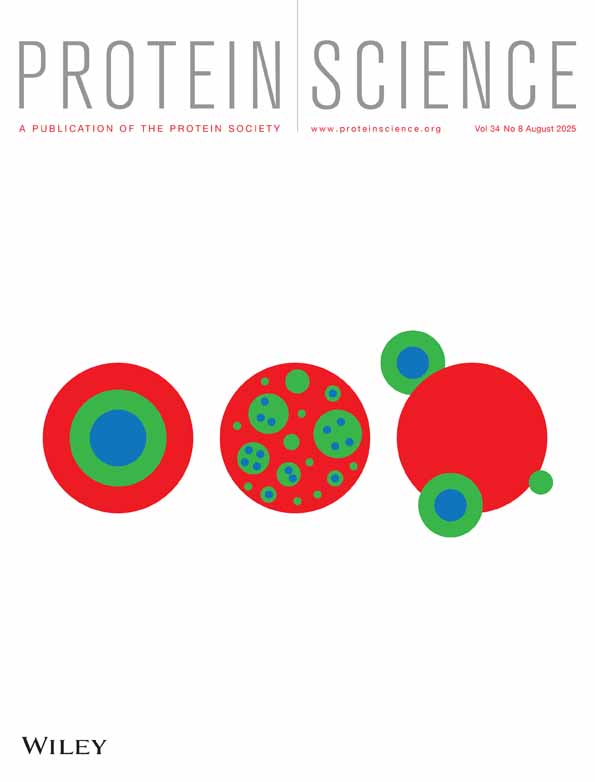Contributions of a hydrogen bond/salt bridge network to the stability of secondary and tertiary structure in λ repressor
Abstract
In the N-terminal domain of λ repressor, the Asp 14 side chain forms an intrahelical, hydrogen bond/salt bridge with the Arg 17 side chain and a tertiary hydrogen bond with the Ser 77 side chain. By measuring the stabilities to urea denaturation of the wild-type N-terminal domain and variants containing single, double, and triple alanine substitutions at positions 14, 17, and 77, the side-chain interaction energies, the coupling energy between interactions, and the intrinsic effects of each wild-type side chain on protein stability have been estimated. These studies indicate that the Asp 14–Arg 17 and Asp 14–Ser 77 interactions are stabilizing by roughly 0.8 and 1.5 kcal/mol, respectively, but that Asp 14, by itself, is destabilizing by roughly 0.9 kcal/mol. We also show that a peptide model of α-helix 1, which contains Asp 14 and Arg 17, forms a reasonably stable, monomeric helix in solution and responds to alanine mutations at positions 14 and 17 in the fashion expected from the intact protein studies. These studies suggest that it is possible to view the stability effects of mutations in intact proteins in a hierarchical fashion, with the stability of units of secondary structure being distinguishable from the stability of tertiary structure.




